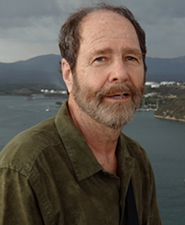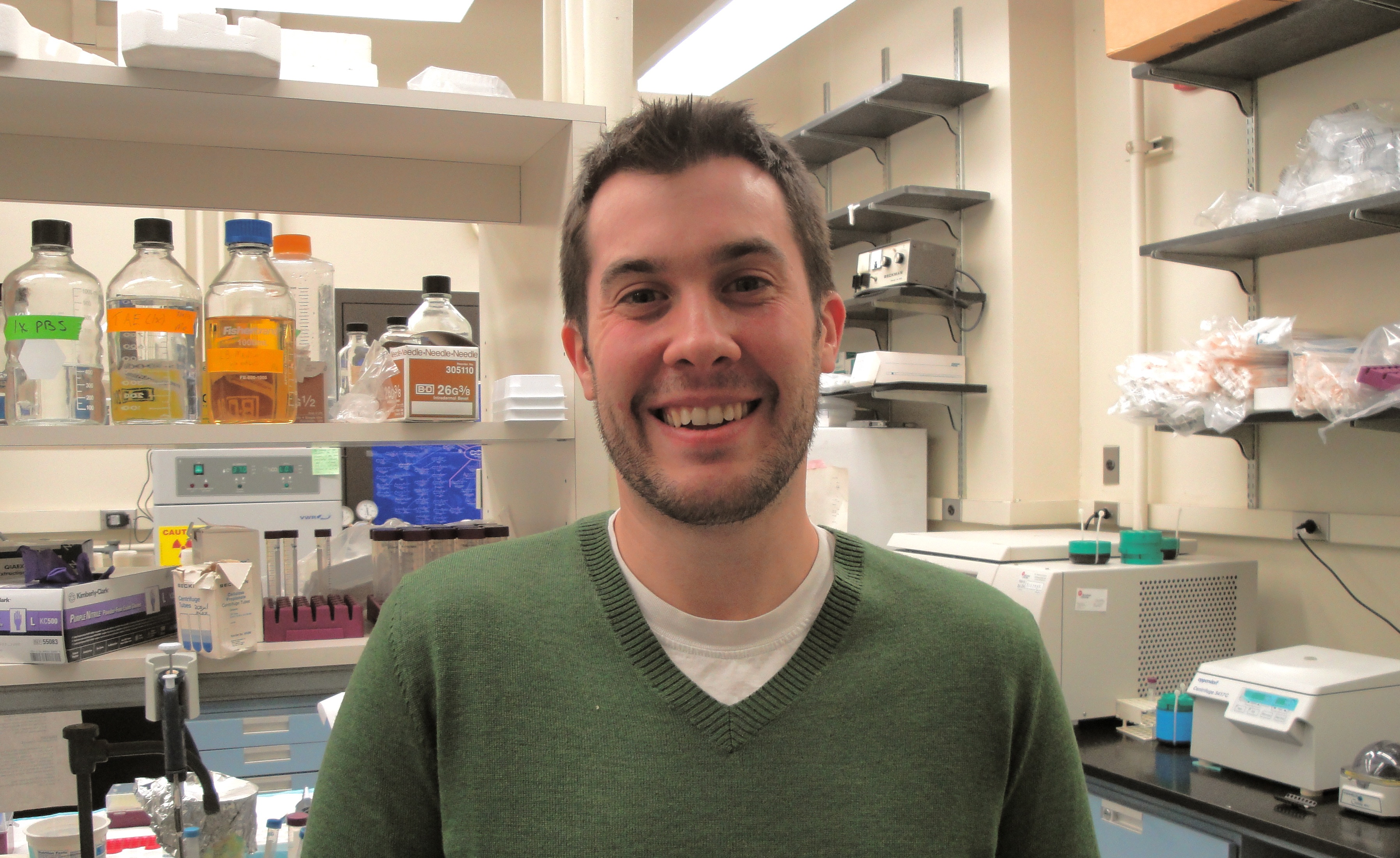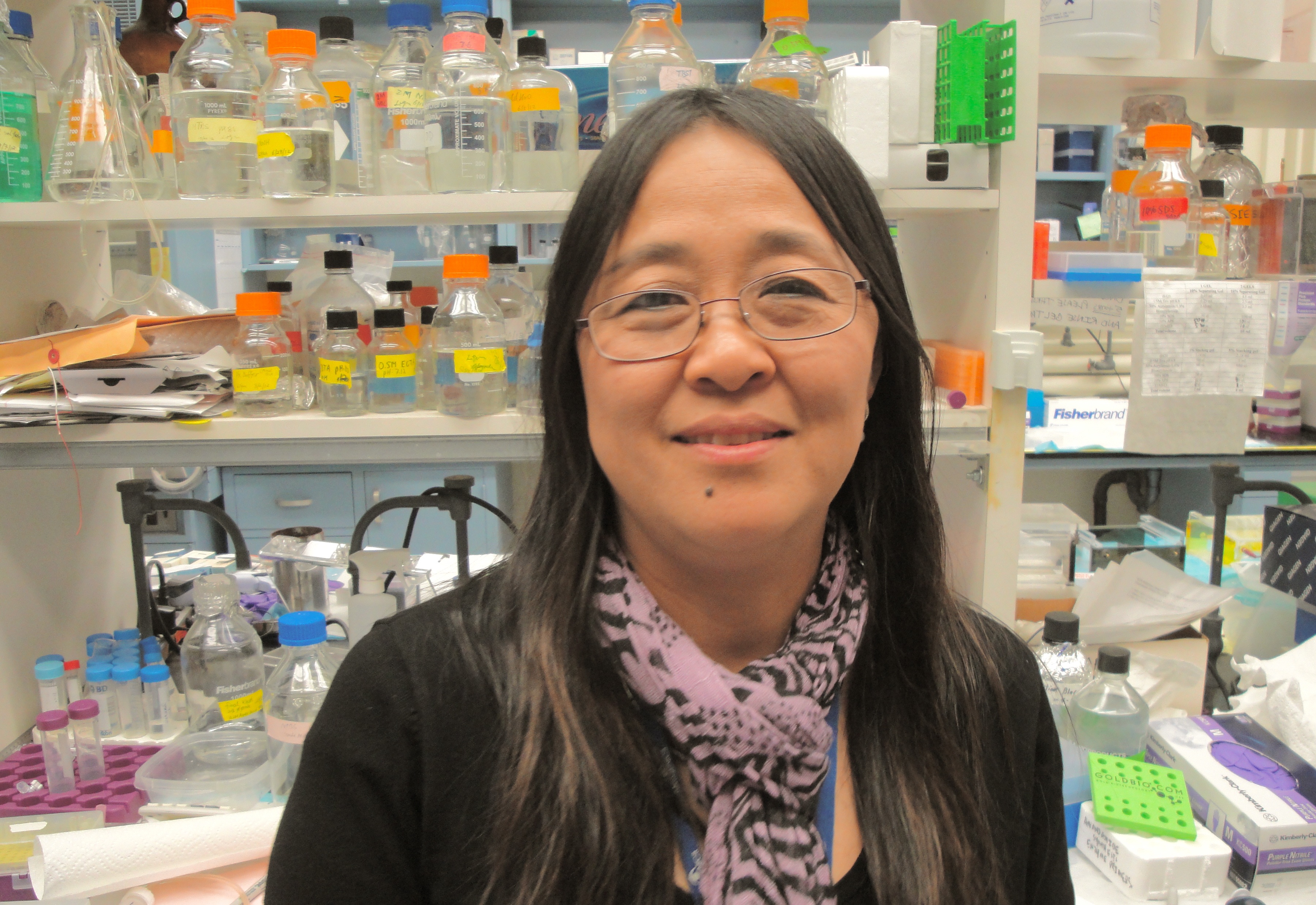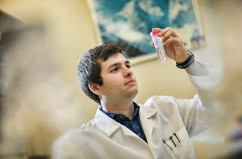Dale Deustch, Ph.D.
 Professor Emeritus
Professor Emeritus
Department of Biochemistry and Cell Biology
320 Life Sciences Building
Stony Brook University
Stony Brook, NY 11794-5215
E-mail: dale.deutsch@stonybrook.edu
- Research Description
Schematic of Anandamide Uptake and Inactivation. Endogenous anandamide (AEA) passes through the cellular membrane without the need for a protein transporter and is shuttled through the aqueous environment of the cytoplasm with the fatty acid binding protein transporters (FABPs) to endoplasmic reticulum (ER) localized fatty acid amide hydrolase (FAAH) for catabolism. FAAH drives the uptake and inhibition of FAAH or the FABPs reduces the rate of anandamide breakdown and raises the AEA levels for signaling at the receptor (taken from A Personal Retrospective: Elevating Anandamide (AEA) by Targeting Fatty Acid Amide Hydrolase (FAAH) and the Fatty Acid Binding Proteins (FABPs). Deutsch DG. Front Pharmacol. 2016 Oct 13;7:370).
Nearly all neurotransmitters are water soluble and, as such, require a transmembrane protein transporter to pass through the lipid membrane for inactivation inside the cell. However, using model systems, we and others have shown that this is unnecessary for anandamide, an uncharged hydrophobic molecule that readily diffuses across the cellular membrane. Interestingly, its uptake is driven by the concentration gradient resulting from its breakdown mainly by FAAH localized in the endoplasmic reticulum.
We identified the FABPs as intracellular carriers that “solubilize” anandamide, transporting anandamide to FAAH. As shown in the Figure, inhibiting the FABPs will reduce the AEA delivery to FAAH and disrupt the outward/inward concentration gradient driven by FAAH. Compounds that bind to FABPs block AEA breakdown, raising its level. Targeting FABPs may be advantageous since they have some tissue specificity and do not require reactive serine hydrolase inhibitors, as does FAAH, with potential for off-target reactions. Specific inhibitors of the FABPs were developed at Stony Brook such as SBFI26 that led to an increase in AEA levels in the periphery and brains of animals and they had analgesic effects.
The cannabinoids (THC and CBD) also were discovered to bind FABPs and this may be one of the mechanisms by which CBD works in childhood epilepsy, raising anandamide levels. We are continuing our drug discovery program, with five collaborators, to make better FABP inhibitors and we also looking at the FABP transport of cannabinoids in liver for metabolism at the cytochrome P450s.
References: https://www.ncbi.nlm.nih.gov/pubmed/?term=deutsch+dg
- Selected Publications
- Tsuboi, K., N. Ikematsu, T. Uyama, D.G. Deutsch, A. Tokumura, and N. Ueda, Biosynthetic pathways of bioactive N-acylethanolamines in brain. CNS Neurol Disord Drug Targets, 2013. 12(1): p. 7-16.
- Leung, K., M.W. Elmes, S.T. Glaser, D.G. Deutsch, and M. Kaczocha, Role of FAAH-like anandamide transporter in anandamide inactivation. PLoS One, 2013. 8(11): p. e79355.
- Kaczocha, M., S. Vivieca, J. Sun, S.T. Glaser, and D.G. Deutsch, Fatty acid-binding proteins transport N-acylethanolamines to nuclear receptors and are targets of endocannabinoid transport inhibitors. J Biol Chem, 2012. 287(5): p. 3415-24.
- Kaczocha, M., Q. Lin, L.D. Nelson, M.K. McKinney, B.F. Cravatt, E. London, and D.G. Deutsch, Anandamide externally added to lipid vesicles containing trapped fatty acid amide hydrolase (FAAH) is readily hydrolyzed in a sterol-modulated fashion. ACS Chem Neurosci, 2012. 3(5): p. 364-8.
- Berger, W.T., B.P. Ralph, M. Kaczocha, J. Sun, T.E. Balius, R.C. Rizzo, S. Haj-Dahmane, I. Ojima, and D.G. Deutsch, Targeting fatty acid binding protein (FABP) anandamide transporters - a novel strategy for development of anti-inflammatory and anti-nociceptive drugs. PLoS One, 2012. 7(12): p. e50968.
- Wellner, N., K. Tsuboi, A.N. Madsen, B. Holst, T.A. Diep, M. Nakao, A. Tokumura, M.P. Burns, D.G. Deutsch, N. Ueda, and H.S. Hansen, Studies on the anorectic effect of N-acylphosphatidylethanolamine and phosphatidylethanolamine in mice.Biochim Biophys Acta, 2011. 1811(9): p. 508-12.
- Tsuboi, K., Y. Okamoto, N. Ikematsu, M. Inoue, Y. Shimizu, T. Uyama, J. Wang, D.G. Deutsch, M.P. Burns, N.M. Ulloa, A. Tokumura, and N. Ueda, Enzymatic formation of N-acylethanolamines from N-acylethanolamine plasmalogen through N-acylphosphatidylethanolamine-hydrolyzing phospholipase D-dependent and -independent pathways. Biochim Biophys Acta, 2011. 1811(10): p. 565-77.
- Izzo, A.A. and D.G. Deutsch, Unique pathway for anandamide synthesis and liver regeneration. Proc Natl Acad Sci U S A, 2011. 108(16): p. 6339-40.
- Howlett, A.C., P.H. Reggio, S.R. Childers, R.E. Hampson, N.M. Ulloa, and D.G. Deutsch, Endocannabinoid tone versus constitutive activity of cannabinoid receptors. Br J Pharmacol, 2011. 163(7): p. 1329-43.
- Ulloa, N.M. and D.G. Deutsch, Assessment of a spectrophotometric assay for monoacylglycerol lipase activity. AAPS J, 2010. 12(2): p. 197-201.
- Kaczocha, M., S.T. Glaser, J. Chae, D.A. Brown, and D.G. Deutsch, Lipid droplets are novel sites of N-acylethanolamine inactivation by fatty acid amide hydrolase-2. J Biol Chem, 2010. 285(4): p. 2796-806.
- Kaczocha, M., S.T. Glaser, and D.G. Deutsch, Identification of intracellular carriers for the endocannabinoid anandamide. Proc Natl Acad Sci U S A, 2009. 106(15): p. 6375-80.
- Kaczocha, M., A. Hermann, S.T. Glaser, I.N. Bojesen, and D.G. Deutsch, Anandamide uptake is consistent with rate-limited diffusion and is regulated by the degree of its hydrolysis by fatty acid amide hydrolase. J Biol Chem, 2006. 281(14): p. 9066-75.
- Hermann, A., M. Kaczocha, and D.G. Deutsch, 2-Arachidonoylglycerol (2-AG) membrane transport: history and outlook. AAPS J, 2006. 8(2): p. E409-12.
- Mechoulam, R. and D.G. Deutsch, Toward an anandamide transporter. Proc Natl Acad Sci U S A, 2005. 102(49): p. 17541-2.
- Glaser, S.T., M. Kaczocha, and D.G. Deutsch, Anandamide transport: a critical review. Life Sci, 2005. 77(14): p. 1584-604.
- Glaser, S.T., D.G. Deutsch, K.M. Studholme, S. Zimov, and S. Yazulla, Endocannabinoids in the intact retina: 3 H-anandamide uptake, fatty acid amide hydrolase immunoreactivity and hydrolysis of anandamide. Vis Neurosci, 2005. 22(6): p. 693-705.
- Deutsch, D.G., Design of on-target FAAH inhibitors. Chem Biol, 2005. 12(11): p. 1157-8.
- Glaser, S.T., N.A. Abumrad, F. Fatade, M. Kaczocha, K.M. Studholme, and D.G. Deutsch, Evidence against the presence of an anandamide transporter. Proc Natl Acad Sci U S A, 2003. 100(7): p. 4269-74.
- Deutsch, D.G., N. Ueda, and S. Yamamoto, The fatty acid amide hydrolase (FAAH). Prostaglandins Leukot Essent Fatty Acids, 2002. 66(2-3): p. 201-10.
- Puffenbarger, R.A., O. Kapulina, J.M. Howell, and D.G. Deutsch, Characterization of the 5'-sequence of the mouse fatty acid amide hydrolase. Neurosci Lett, 2001. 314(1-2): p. 21-4.
- Deutsch, D.G., S.T. Glaser, J.M. Howell, J.S. Kunz, R.A. Puffenbarger, C.J. Hillard, and N. Abumrad, The cellular uptake of anandamide is coupled to its breakdown by fatty-acid amide hydrolase. J Biol Chem, 2001. 276(10): p. 6967-73.
- Day, T.A., F. Rakhshan, D.G. Deutsch, and E.L. Barker, Role of fatty acid amide hydrolase in the transport of the endogenous cannabinoid anandamide. Mol Pharmacol, 2001. 59(6): p. 1369-75.
- Ueda, N., R.A. Puffenbarger, S. Yamamoto, and D.G. Deutsch, The fatty acid amide hydrolase (FAAH). Chem Phys Lipids, 2000. 108(1-2): p. 107-21.
- Stefano, G.B., T.V. Bilfinger, C.M. Rialas, and D.G. Deutsch, 2-arachidonyl-glycerol stimulates nitric oxide release from human immune and vascular tissues and invertebrate immunocytes by cannabinoid receptor 1. Pharmacol Res, 2000. 42(4): p. 317-22.
- Martin, B.R., I. Beletskaya, G. Patrick, R. Jefferson, R. Winckler, D.G. Deutsch, V. Di Marzo, O. Dasse, A. Mahadevan, and R.K. Razdan, Cannabinoid properties of methylfluorophosphonate analogs. J Pharmacol Exp Ther, 2000. 294(3): p. 1209-18.
- Yazulla, S., K.M. Studholme, H.H. McIntosh, and D.G. Deutsch, Immunocytochemical localization of cannabinoid CB1 receptor and fatty acid amide hydrolase in rat retina. J Comp Neurol, 1999. 415(1): p. 80-90.
- Omeir, R.L., G. Arreaza, and D.G. Deutsch, Identification of two serine residues involved in catalysis by fatty acid amide hydrolase. Biochem Biophys Res Commun, 1999. 264(2): p. 316-20.
- Fimiani, C., D. Mattocks, F. Cavani, M. Salzet, D.G. Deutsch, S. Pryor, T.V. Bilfinger, and G.B. Stefano, Morphine and anandamide stimulate intracellular calcium transients in human arterial endothelial cells: coupling to nitric oxide release. Cell Signal, 1999. 11(3): p. 189-93.
- Arreaza, G. and D.G. Deutsch, Deletion of a proline-rich region and a transmembrane domain in fatty acid amide hydrolase.FEBS Lett, 1999. 454(1-2): p. 57-60.
- Tsou, K., M.I. Nogueron, S. Muthian, M.C. Sanudo-Pena, C.J. Hillard, D.G. Deutsch, and J.M. Walker, Fatty acid amide hydrolase is located preferentially in large neurons in the rat central nervous system as revealed by immunohistochemistry.Neurosci Lett, 1998. 254(3): p. 137-40.
- Stefano, G.B., C.M. Rialas, D.G. Deutsch, and M. Salzet, Anandamide amidase inhibition enhances anandamide-stimulated nitric oxide release in invertebrate neural tissues. Brain Res, 1998. 793(1-2): p. 341-5.
- Di Marzo, V. and D.G. Deutsch, Biochemistry of the endogenous ligands of cannabinoid receptors. Neurobiol Dis, 1998. 5(6 Pt B): p. 386-404.
- Bilfinger, T.V., M. Salzet, C. Fimiani, D.G. Deutsch, G. Tramu, and G.B. Stefano, Pharmacological evidence for anandamide amidase in human cardiac and vascular tissues. Int J Cardiol, 1998. 64 Suppl 1: p. S15-22.
- Deutsch, D.G., R. Omeir, G. Arreaza, D. Salehani, G.D. Prestwich, Z. Huang, and A. Howlett, Methyl arachidonyl fluorophosphonate: a potent irreversible inhibitor of anandamide amidase. Biochem Pharmacol, 1997. 53(3): p. 255-60.
- Deutsch, D.G. and A. Makriyannis, Inhibitors of anandamide breakdown. NIDA Res Monogr, 1997. 173: p. 65-84.
- Deutsch, D.G., S. Lin, W.A. Hill, K.L. Morse, D. Salehani, G. Arreaza, R.L. Omeir, and A. Makriyannis, Fatty acid sulfonyl fluorides inhibit anandamide metabolism and bind to the cannabinoid receptor. Biochem Biophys Res Commun, 1997. 231(1): p. 217-21.
- Deutsch, D.G., M.S. Goligorsky, P.C. Schmid, R.J. Krebsbach, H.H. Schmid, S.K. Das, S.K. Dey, G. Arreaza, C. Thorup, G. Stefano, and L.C. Moore, Production and physiological actions of anandamide in the vasculature of the rat kidney. J Clin Invest, 1997. 100(6): p. 1538-46.
- Arreaza, G., W.A. Devane, R.L. Omeir, G. Sajnani, J. Kunz, B.F. Cravatt, and D.G. Deutsch, The cloned rat hydrolytic enzyme responsible for the breakdown of anandamide also catalyzes its formation via the condensation of arachidonic acid and ethanolamine. Neurosci Lett, 1997. 234(1): p. 59-62.
- Omeir, R.L., S. Chin, Y. Hong, D.G. Ahern, and D.G. Deutsch, Arachidonoyl ethanolamide-[1,2-14C] as a substrate for anandamide amidase. Life Sci, 1995. 56(23-24): p. 1999-2005.
- Koutek, B., G.D. Prestwich, A.C. Howlett, S.A. Chin, D. Salehani, N. Akhavan, and D.G. Deutsch, Inhibitors of arachidonoyl ethanolamide hydrolysis. J Biol Chem, 1994. 269(37): p. 22937-40.
- Tombler, E.R. and D.G. Deutsch, Spectrofluorometric assay for hybridization of oligodeoxynucleotides using ethidium dimer.Biotechniques, 1993. 15(6): p. 1060-4.
- Deutsch, D.G. and S.A. Chin, Enzymatic synthesis and degradation of anandamide, a cannabinoid receptor agonist. Biochem Pharmacol, 1993. 46(5): p. 791-6.
- Lab Members
- Jing Sung
 MA Chinese Academy of Preventative MedicineM.D., China Medical CollegeResearch Technician III Tel. 631 632 6772
MA Chinese Academy of Preventative MedicineM.D., China Medical CollegeResearch Technician III Tel. 631 632 6772
Fax 631 632 9730 - Nadline Ulloa
 B.A. BiochemistryNew York University, 2005Graduate Student Tel 631 632 6772
B.A. BiochemistryNew York University, 2005Graduate Student Tel 631 632 6772
Fax 631 632 9730 - Olivia Joseph
 Undergraduate student
Undergraduate student - Matthew Elmes
 B.S. Cell & Molecular Biology 2008 M.A. Biochemistry 2009Binghamton University
B.S. Cell & Molecular Biology 2008 M.A. Biochemistry 2009Binghamton University - Joyce CheUndergraduate Student
- Liqun Wang
 B.S. Dept. of BiologyHarbin Normal UniversityResearch Technician III
B.S. Dept. of BiologyHarbin Normal UniversityResearch Technician III - Jackson YeBiology Major UndergraduateLab Technician Assistant
- Orleny LopezBiology MajorUndergraduateWork Study
- Joseph Sweeney
 Biochemistry MajorUndergraduateWork Study
Biochemistry MajorUndergraduateWork Study - Garam Lee

- Redha Tareen

- Jing Sung
